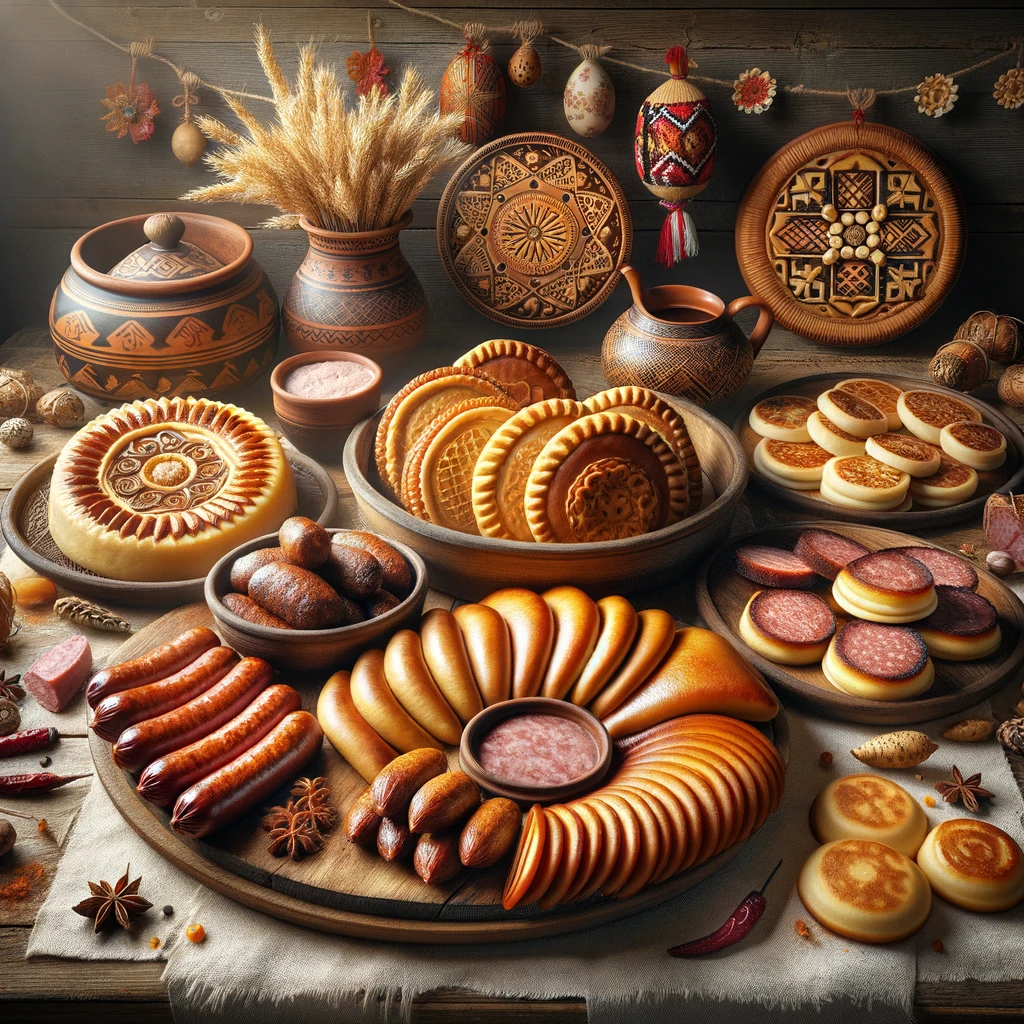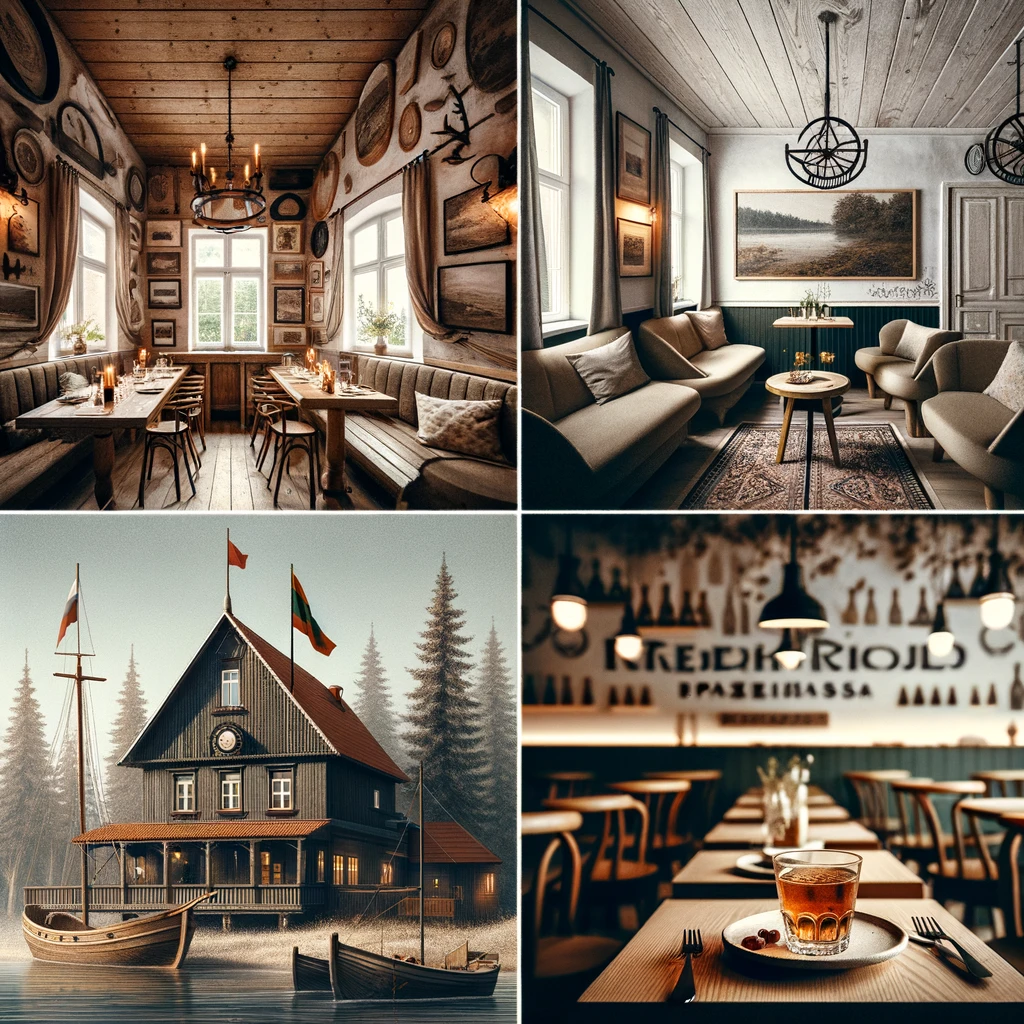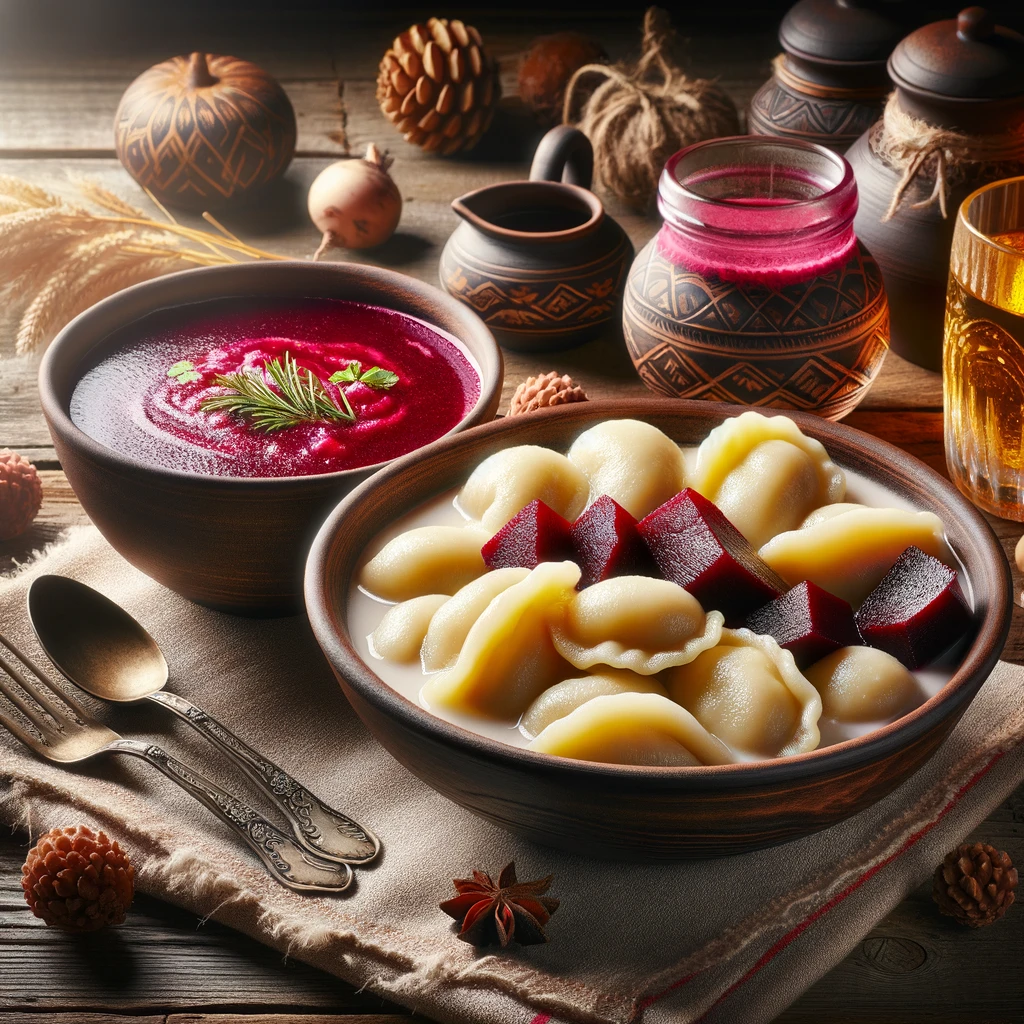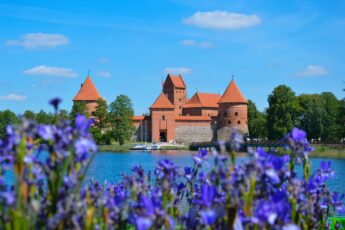
Traditional ingredients
Lithuanians value products such as potatoes, beets, rye bread, meat (especially pork), fish and fresh vegetables. These are ingredients that form the basis of many traditional dishes.
Impact of culture and geography on local dishes
The location of Lithuania at the interface of different culinary cultures contributed to the uniqueness of her kitchen. On the one hand, the proximity of the Baltic influenced the popularity of fish, on the other - forest areas are a source of mushrooms and venison.
Seasonality and tradition
Lithuanian cuisine also reflects the annual cycle. Spring and summer is time for fresh vegetables and fruits, autumn is a season for mushrooms and venison, and winter is a period when dishes based on potatoes and meat dominate.
Table culture
Lithuanians attach great importance to shared meals and traditional holidays, which also shapes their kitchen. An important element are traditional holidays, such as Kūčios (Christmas Eve), during which 12 fast dishes are served.
Traditional dish: cepelin
Cepelin: the heart of Lithuanian cuisine
Cepelin, also known as "Zeppelin", is one of the most characteristic and liked elements of Lithuanian cuisine. Their name comes from the similarity to Zeppelin, which reflects their oval shape. Cepelin is a dish that has gained popularity in the interwar period and quickly became a symbol of Lithuanian hospitality and culinary tradition.
Cultural importance
Cepelin is not just food; They are part of the Lithuanian national identity. Traditionally served during important holidays and family celebrations, they have become synonymous with home warmth and tradition.

Cepelin is not only a tasty element of Lithuanian cuisine, but also an important cultural symbol. Their preparation requires time and skills, which makes them a unique dish, ideal for special occasions. Discovering this dish is a great way to understand Lithuanian culture and tradition.
Cold soup: Shaltibarszczai
Szaltibarszczai: Lithuanian response to the summer heat
Szaltibarszczai is a traditional Lithuanian cold soup, perfect for hot summer days. Characteristic for her is the intensely pink color, resulting from the use of beets. This is a light, refreshing dish, often served as an appetizer.
Ingredients and flavors
The basis of the crap are cooked and grated beets, which give the soup not only color, but also a slightly sweet, earthy taste. To this, cream, pickled cucumbers, dill, and sometimes hard -boiled eggs are added.

Szaltibarszczai is a great example of Lithuanian cuisine in the summer. It is a dish that surprises with its simplicity, but at the same time with a wealth of taste. Its lightness and refreshing character make it a great choice for warm days.
Other popular Lithuanian dishes
A short list of other traditional dishes
The variety of flavors of Lithuanian cuisine Lithuania, with its rich culinary tradition, offers many other fascinating dishes that are worth getting to know. Here are some examples:
- Kibinai - traditional pasties from the Karaim region, filled with meat (usually mutton) and onions.
- Šakotis - a unique Lithuanian cake, known as "baked tree", characteristic shape and texture.
- Skilandis - Lithuanian smoked sausage, prepared from meat and pork fat, wrapped in a stomach or intestine.
- Bulviniai Blynai - potato pancakes, often served with sour cream and/or greaves.
What makes them unique?
Tradition and modernity
- Kibinai: their uniqueness results from the history of Karaims in Lithuania, which is the culinary heritage of this ethnic minority.
- Šakotis: This dough is unique because of its preparation process, which requires a special rotating corner.
- Skandis: The uniqueness of this sausage is the traditional method of smoking and ripening, giving it a deep, rich taste.
- Bulviniai Blynai: These pancakes are an expression of the simplicity and universality of Lithuanian cuisine, combining the simplicity of ingredients with the wealth of taste.

Lithuanian cuisine offers not only unique main dishes, but also a rich palette of snacks, desserts and regional dishes. Each of these dishes is unique, reflecting the rich history and cultural diversity of Lithuania.
Where to eat: the best restaurants and cafes in Lithuania
Recommendations of places in various cities of Lithuania
Lithuanian flavors in its best premises Traveling around Lithuania, it is worth stopping in her best restaurants and cafes to experience authentic flavors of local cuisine. Here are some recommended places:
- Vilnius: "Etno Dvaras"
- Location: the center of the Old Town.
- Specialty: traditional Lithuanian dishes such as cepelin and skewers.
- Atmosphere: Rustic decor with ethnic elements.
- Kaunas: "Medžiotojų užeiga"
- Location: close to the city center.
- Specialty: venison dishes and local specialties.
- Atmosphere: elegant, with a historic accent.
- Klaipeda: "Friedricho Pasas"
- Location: near the port.
- Specialty: fresh seafood and fish.
- Atmosphere: Modern with a marine motif.
- Trakai: "Kybynlar"
- Location: in the heart of the city.
- Specialty: Kibinai, traditional karaim pasties.
- Atmosphere: simple and authentic.
What to choose in the menu?
Culinary adventure in Lithuanian restaurants
- In "Etno Dvaras" do not miss the chance of trying cepelines served with sour cream and greaves.
- In "Medžiotojų užeiga" we recommend trying venison, which is prepared according to traditional methods.
- In "Friedricho Pasas", the perfect choice will be fresh fish from the Baltic Sea, prepared in many ways.
- In Kybynlar, be sure to try the toilet, which are served here in many variants.

Each of these places offers not only great food, but also a unique atmosphere and insight into Lithuanian culture. By visiting these restaurants, you have a chance not only to eat, but also to experience the true spirit of Lithuania.
End: Culinary journey through Lithuania
Discovering the wealth of Lithuanian cuisine Culinary journey around Lithuania is a real feast for the senses. From cordial and filling cepelins, through refreshing skewers, to sophisticated flavors of venison and fresh fish from the Baltic - each dish tells a different story and reflects the richness of Lithuanian culture.
Lithuanian cuisine is a mixture of flavors and aromas, where each region has something special to offer. Regardless of whether it is a simple rural tavern or an elegant restaurant in the city, each place serves dishes that will satisfy every gourmet.







